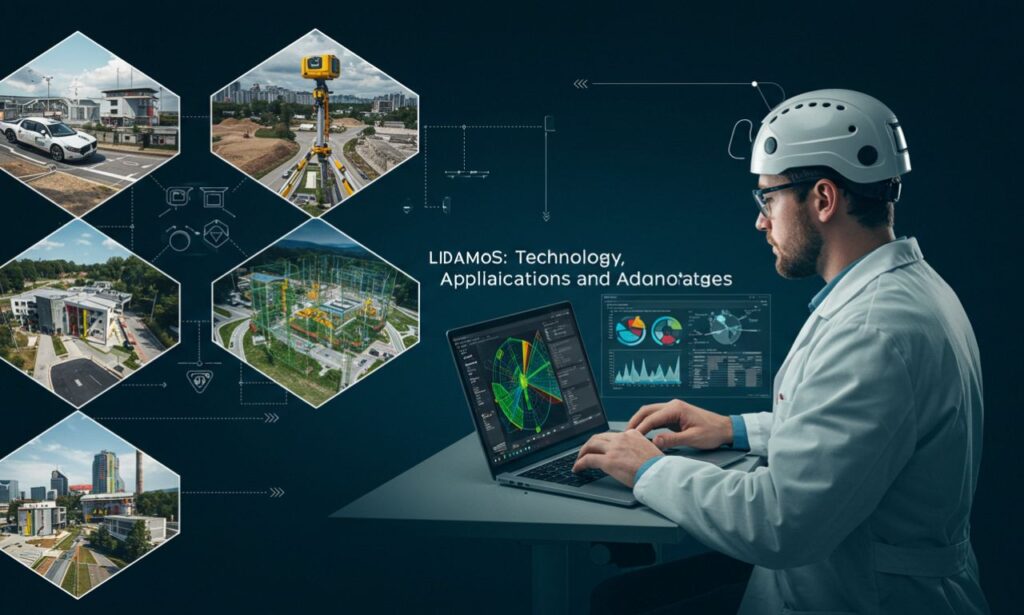Lidarmos (a pluralized or stylized form of LiDAR modules or systems) are high-precision devices used to measure distances using laser pulses. The name LiDAR stands for Light Detection and Ranging, and lidarmos refers to systems or components that employ this technology. These systems generate 3D maps, scan environments, and detect objects with incredible accuracy.
Lidar-mos have revolutionized sectors such as autonomous vehicles, environmental mapping, geospatial sciences, and smart infrastructure. As a non-contact measurement method, they offer faster and more accurate data than traditional techniques.
Understanding the Concept of Lidarmos
At its core, a lidar-mos system sends out laser beams toward a target. These beams bounce off the target and return to the sensor. By calculating the time it takes for the light to return, the system can determine the distance to the object.
Lidar-mos can operate at high speeds and collect millions of data points per second. These points form what’s called a point cloud, which can be turned into detailed 3D models of environments, objects, or surfaces.
Types of Lidarmos
There are several kinds of lidar-mos, each suited to specific applications:
1. Terrestrial Lidarmos
Used in ground-based surveys and infrastructure inspection. Mounted on tripods, vehicles, or buildings.
2. Aerial Lidarmos
Attached to drones, planes, or helicopters for topographic mapping and forestry monitoring.
3. Mobile Lidarmos
Integrated with vehicles or robots for real-time 3D mapping while in motion—key to autonomous driving.
4. Solid-State Lidarmos
Compact, durable systems with no moving parts—ideal for automotive or mobile devices.
Key Components of Lidarmos
A typical lidar-mos setup includes:
-
Laser Source – Emits pulses of light.
-
Photodetector – Captures returning light signals.
-
Scanning Mechanism – Directs laser beams across the scene.
-
IMU (Inertial Measurement Unit) – Tracks orientation and movement.
-
GPS – Geolocates the scanning area.
-
Software – Processes raw data into usable 3D models.
Each component plays a critical role in ensuring the accuracy and reliability of data collected through lidarmos.
How Lidarmos Work
The basic principle behind lidar-mos is time-of-flight measurement. Here’s how it works:
-
The lidar unit sends out a laser pulse.
-
The pulse hits an object or surface.
-
The reflected pulse is detected by the sensor.
-
The time difference between emission and reception is calculated.
-
This data is converted into distance.
-
The sensor sweeps across an area to build a 3D model.
This method enables the system to determine not just the presence of an object but its exact position and size in space.
Applications of Lidarmos
1. Autonomous Vehicles
Lidarmos are the eyes of self-driving cars. They help vehicles detect pedestrians, lane markings, traffic signs, and other cars, ensuring safe navigation.
2. Urban Planning and Smart Cities
By capturing detailed 3D data of roads, buildings, and landscapes, lidarmos assist city planners in designing infrastructure, monitoring traffic, and managing utilities.
3. Agriculture and Forestry
Aerial lidarmos are used to map crop health, analyze terrain, and manage forest density—enabling precision farming and sustainable land use.
4. Environmental Monitoring
Lidar-mos monitor coastal erosion, riverbank shifts, glaciers, and deforestation. This data is critical in tracking climate change and planning conservation efforts.
5. Archaeology
In archaeology, lidarmos penetrate dense vegetation to reveal ancient ruins and landscapes that are invisible to the naked eye or traditional tools.
6. Construction and Mining
Lidar-mos aid in site planning, progress tracking, and resource estimation. They ensure safety and efficiency by offering real-time data.
Advantages of Lidarmos
High Accuracy
Lidar-mos provide centimeter-level accuracy, which is unmatched by most other remote sensing technologies.
Non-Intrusive
They do not physically touch the object or surface being scanned, making them suitable for delicate environments like forests or archaeological sites.
Rapid Data Collection
Capable of collecting millions of points per second, lidarmos reduce fieldwork time drastically.
Operability in Low Light
Unlike cameras, lidar-mos do not rely on ambient light, allowing them to function in dark environments or at night.
Limitations of Lidarmos
High Cost
Lidarmos, especially high-end models, can be expensive, which may limit their accessibility.
Sensitivity to Weather
Fog, rain, and dust can interfere with the laser pulses, affecting accuracy.
Large Data Volume
Processing and storing large point clouds requires high computational power and storage space.
Reflective Surfaces
Highly reflective or transparent surfaces like water or glass may scatter the laser, leading to inaccurate readings.
Recent Innovations in Lidarmos
With growing demand for compact and efficient systems, newer lidar-mos are being developed with:
-
Increased range and resolution
-
Lower energy consumption
-
Better resistance to environmental factors
-
Miniaturized, chip-based solid-state models
Automotive tech companies are investing heavily in lidarmos for safer autonomous vehicles. Similarly, in drones and robotics, mini lidarmos are becoming popular due to their light weight and high efficiency.
Using Lidarmos in Everyday Life
Though still largely industrial, lidarmos are entering consumer tech. For instance:
-
Smartphones – Some models now include lidar sensors for AR (Augmented Reality).
-
Robotic Vacuums – Lidarmos help map rooms and avoid obstacles.
-
Gaming and VR – Accurate tracking of player movement and environment.
Future Outlook of Lidarmos
As AI and IoT grow, lidarmos will play a central role in gathering spatial data for real-time decision-making. The integration of machine learning with lidarmos data will open up possibilities in real-time analytics, predictive modeling, and enhanced automation.
Moreover, as prices drop and efficiency improves, lidar-mos are likely to become as common as GPS in personal and professional devices.
Conclusion
Lidar-mos represent a breakthrough in how we perceive, map, and interact with the physical world. From self-driving cars to environmental conservation, their precision and versatility make them a key technology in the digital era. Despite challenges like cost and data volume, ongoing advancements promise to make lidar-mos even more efficient and accessible.
Understanding the full potential of lidar-mos is not only fascinating but essential for industries aiming to automate, digitize, and innovate their operations. As these systems continue to evolve, they are set to redefine the boundaries of what’s possible with 3D sensing and spatial intelligence.







